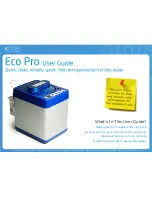
Issue: January 18 2005
Page 5
5 CONTRAST.
If the display contrast is not set properly at power on, switch off the machine, keep the “RIGHT” arrow
key (12) pressed while turning on the machine. This brings the machine directly to the contrast menu.
Adjust step-by-step with the “UP” (9) or “DOWN” (11) arrow keys to increase or decrease accordingly.
Once the correct contrast is found, press the “CENTER” key (13) to store the new setting in the
machine. Press the “LEFT” arrow key (10) to quit the menus. The factory setting has the value “32”.
6 KEYS.
1
Power ON / OFF
2
Record, Marker key
3
Rewind, skip backwards key
4
Stop key
5
Play key
6
Forward, skip forwards key
7
Reduce input sensitivity or playback
level key
8
Increase input sensitivity or
playback level key
9
Up arrow key or increase output
level key
10
Left arrow key
11
Down arrow key or reduce output
level key
12
Right arrow key
13
Other menu or execute key
14
Mark key
15
Keypad lock
7 FAT / NFS MODE DIFFERENCES.
The ARES-BB
+
is equipped with a USB 1.1 connector.
Without any software options installed, the card is formatted “FAT” and is directly compatible with
Windows or Mac O/S. The recorded files are Broadcast Wave Format (xxx.wav). Only PCM can be
recorded (not compressed).
If equipped with the software option #I, the machine emulates also an ARES-P (NFS mode). In the
FAT mode, compressed MPEG files can be recorded. In the “NFS” mode, the maximum bitrate stays
192kb/s, in the “FAT” mode, the maximum bit rate becomes 384kb/s 48kHz stereo.
Only ATA or Compact flash cards can be used in the “FAT” mode.
If equipped with software option #I & #II, the machine also emulates an RCX220. This means that in
the RCX220 mode “NFS”, via USB, Windows recognizes the machine as an external soundcard and in
the “FAT” mode as an external removable hard drive.
Important note:
When making linear recordings (WAV) the range of media that can be used is
restricted. The card must be capable of writing data at high speed. A stereo recording at 48kHz
requires a data rate of 2 x 16 bits x 48000 sampling frequency divided by 8 bits per Byte gives a data
rate of 192 kBytes per second.






































